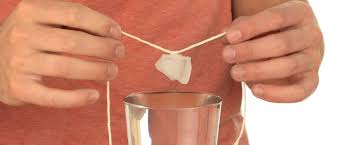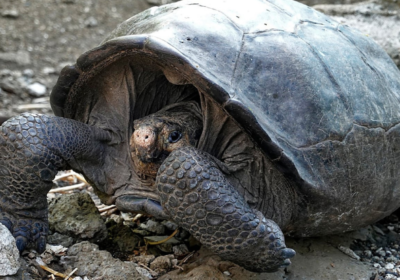Ever fancy having a chain with an ice cube that shines like diamond, as its pendant? You have to compromise on the chain though. It will be a cotton thread. Let us do this ice and salt experiment, and make our ice-laden chain. We will have only a simple science principle as our assistant.

Materials required
Glass – 1
Water – Enough to fill the glass
Ice cube – 1 or 2
Cotton String – 1 (15 to 20 cm long)
Salt – One teaspoon
Steps to follow
- Fill water in the glass.
- Put one ice cube in the water. As we know, ice is less dense than water. So it will float over it.
- Spread the string over the water in the glass in such a way that it touches the ice cube.
- After a minute, lift the string from the sides.
- Did you get the ice with the string? No.
- Spread the string over the ice once again. Now it is time to add our magic ingredient, which is common salt from our kitchen.
- Sprinkle some salt over the ice cube. There should be a layer of salt covering the entire ice cube and the portion of string over it.
- Wait for one minute.
- Now, try to lift the string from its sides.
- What do you see? The ice cube has attached itself to the string. An ice-cube laden string indeed!
Useful Tip: If you find that the string is not clinging to the ice cube, you can try it in a different way. After adding a layer of salt over the string and ice cube, put one more ice cube over it. The string will now have two ice cubes attached to it. This is a sure-shot way to get the ice-laden string.
What we learn
In this ice experiment, we saw the application of some principles of chemistry. Salt has chemical properties which enables it to lower the freezing point of water. If you are residing in an area where winter gets really rough, you might have noticed salt being sprinkled on pavements to melt the snow. The same principle gave us the iced-string.
When we added salt over ice, it melted a top portion of the ice cube by heating it. But our ice cube is surrounded by water. So the water molecules surrounding it caused the melted ice to cool again, and the ice re-froze. But this time when it froze, the string also got trapped inside the ice.
Find more of such interesting experiments from our exhaustive list in the Experiments section.
Here’s Something You Might Like
As a participant in the Amazon Associates Program, Science4Kids may earn from qualifying purchases.
<



